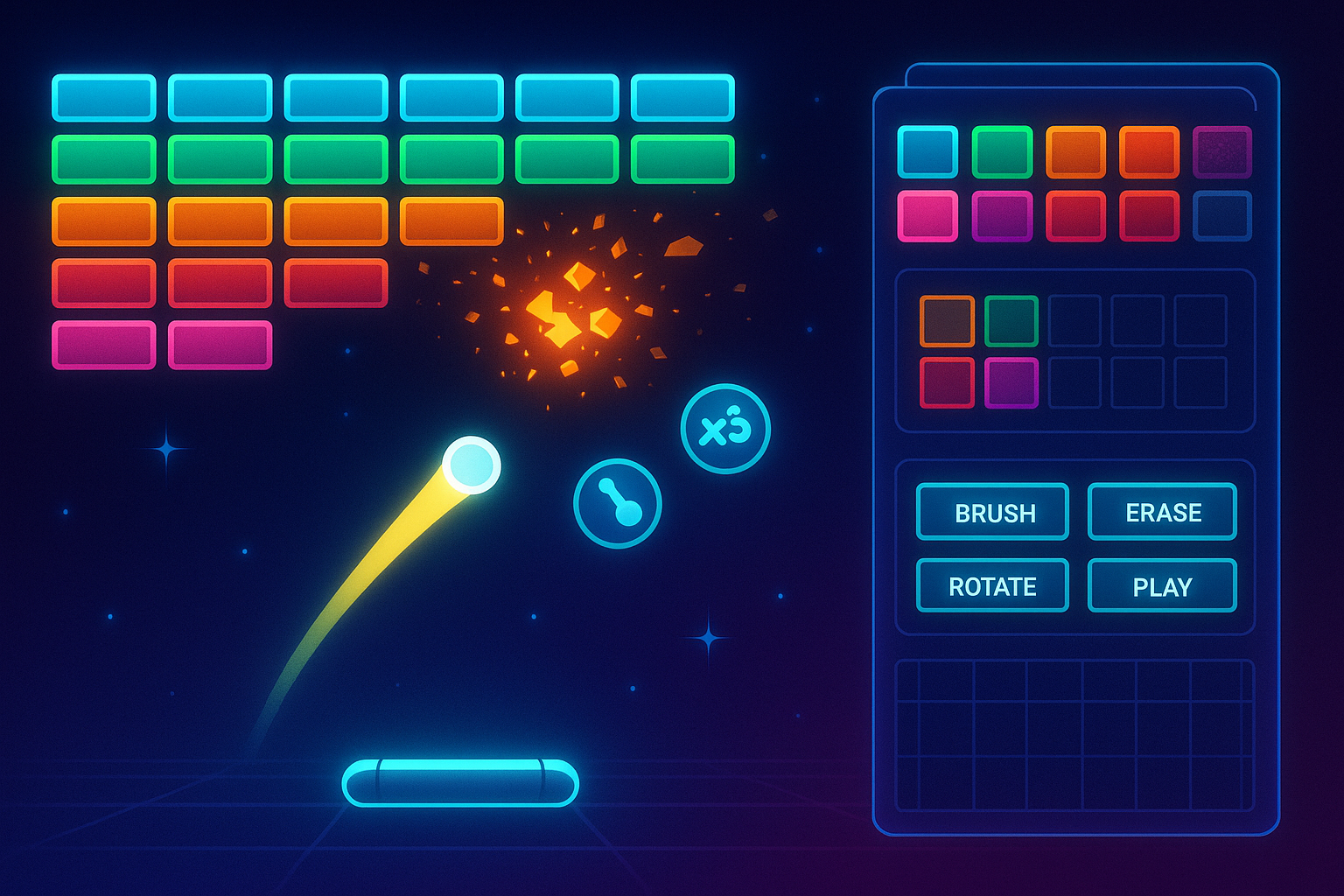Preparing the Field for the Level Editor
Hello everyone!
Today’s development session was focused on laying the groundwork for one of the most important features of the game: the Level Editor. The goal was to ensure a robust and structured base for the level creation process to work seamlessly. Let me share what was accomplished and how it sets the stage for the upcoming tasks.
Automating the Creation of Game Components
To create a fully functioning Level Editor, I needed to establish the foundational elements that make up the levels: bricks and power-ups. Today’s work was about defining their basic structure and ensuring they’re ready to be used in the Level Editor.
🧱 Brick Types
Bricks are the backbone of the game, so defining a diverse set of brick types was critical. Ten different brick types were created, each with unique attributes:
- Color: Makes each brick visually distinctive.
- Hit Point Strategy: Defines how the brick reacts when hit (e.g., decreases durability or remains indestructible).
- Value: Determines the score earned for breaking the brick.
These brick types serve as a placeholder structure for now, and their behaviours can be further expanded in the future.
🌟 Power-Ups
Similarly, the power-up system was initialized by creating barebones structures for various power-ups. While their behaviours (e.g., increasing paddle size, spawning multiple balls, or granting invincibility) aren’t implemented yet, their setup in the project ensures they’re ready for when I tackle this functionality in a future session.
Here are the power-ups added:
- Extra Life
- Multi-Ball
- Wide Paddle
- Laser
- Magnet
- Speed-Up
- Slow-Down
- Invincibility
Automating the Creation Process
To make sure that these components (brick types and power-ups) can be recreated quickly and consistently, I developed automation scripts. These scripts allow me to regenerate all the related ScriptableObjects with just a single button press.
Here’s why this is important:
- Recovery Safeguard: If any ScriptableObjects get corrupted, I can easily recreate them instead of manually rebuilding everything.
- Future Changes: As the structure of these objects evolves in upcoming sessions, I can simply rerun the automation scripts to reflect the latest changes without breaking anything.
- Efficiency: Automatic creation saves time and ensures consistency across the project.
Why This Matters
While today’s work might not be visible in the gameplay yet, it’s an essential step toward the implementation of a seamless Level Editor. These foundational components pave the way for a smooth and automated level creation process. The work done today ensures that:
- Levels can incorporate diverse elements like unique brick types or power-ups.
- Any adjustments to these elements (like changing their structure or behaviour) can be handled easily without manual intervention.
Next Steps
With the necessary building blocks in place, the next step is to dive into the Level Editor itself. I plan to start by creating the UI for the editor, allowing the level creator (myself) to efficiently place, configure, and organize bricks and power-ups into playable levels. This will be an exciting milestone, as it will move the project closer to showcasing customizable gameplay creations.
Thank you for following along with the development journey — the best is yet to come! As always, I’d love to hear your feedback or suggestions, so feel free to drop a comment below.
Here you can find the code on GitHub
Until next time, happy gaming! 🎮✨
Let me know if there's anything you'd like to tweak or add to this devlog!
BrickBreaker
Another Arkanoid/Breakout clone made in Unity 6
More posts
- Level editor progress updateMay 18, 2025

Leave a comment
Log in with itch.io to leave a comment.